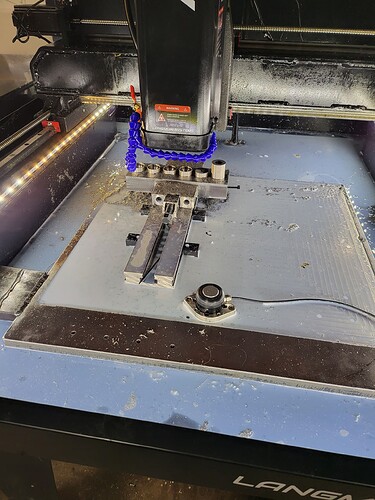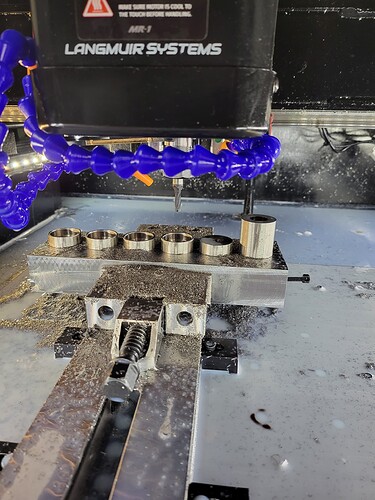So Background why I got the machine (I feel like its important for perspective and why I choose this machine):
Am a custom gunsmith and who grew up in the good ol family machine shop, just got out of the corps and decided to expand my buisness past private sell and knew i needed to either A: get help, or B: make help, whelp the MR-1 was getting great reviews and I needed a cnc for a new product line and to get manufacturing time down so I took the Sorry for your knee caps money I saved up from the military and decided to get one.
First off the Langmuir staff has been awesome, very fast to respond very helpful, they get a 10/10, now to the machine
Now I’ve always been one the draw the short straw lets get that out of the way, picking up the machine went well and the build for the most part was straight forwards, I already have a personal machine shop equipped with a nice lathe, mill, and a generation or two of everything you’d need for them, so I had a bit of advantage getting it straight level etc.,
Fast forward a week into the Build process and I’m machining the build plate, the corners are very far off (there just stock aluminum nothing surprising) and am getting this really bad contact area from the end mill so I assumed I had a bit of nod. I went with the I don’t want to mess with the build plate too much route took a few more small passes to see if I could clean it up with no luck, i said oh well ill fix the nod with at least having a build plate relatively flat,
Finish assembling realized I didn’t have the enclosure hardware, no problem they got it to me in 2 days, all wrapped up and I’m in buisness.
The moment I get the enclosure in we start machining, and for the most part the machine works fantastic, I was machining some smaller 15-7 PH and it worked exceptional, I did notice however a consistenct unevenness when I took the part to the surface plate,
So I go to check and correct the nod when orders died down, low and behold i have 2 thou an inch, used essentially every shim they gave me before it came out now its about .2 thou every 2 inches, well with in workable parameters.
However the unevenness is still there, I check the build plate and its drastically uneven, use a fly cutter and a few hours, but its not coming out, and at this point I’m uncomfortable with the thickness of the build plate, so I do the only thing I know how, put a micrometer on absolutely everything. I took an All nighter but I found it, the X-2 rail is warped, i doesn’t seem to come out with playing with the torque of the screws, and still passes the planar test because the warp is in the middle near the front.
I don’t know how I’m going to fix this just yet, not yet confident I can. Some of the projects I have now will have to postponed since they are on the larger side and I dont know if sending it on this will waster the material or not. However our customer basis is growing so me and the wife have decided to open a youtube channel with the shops journey so If I do figure out what to do yall will hopefully get to see it,
Current objectives: figure out how to reinforce the scary thinner base plate, how to fix a warped gantry with everything cemented in place,



